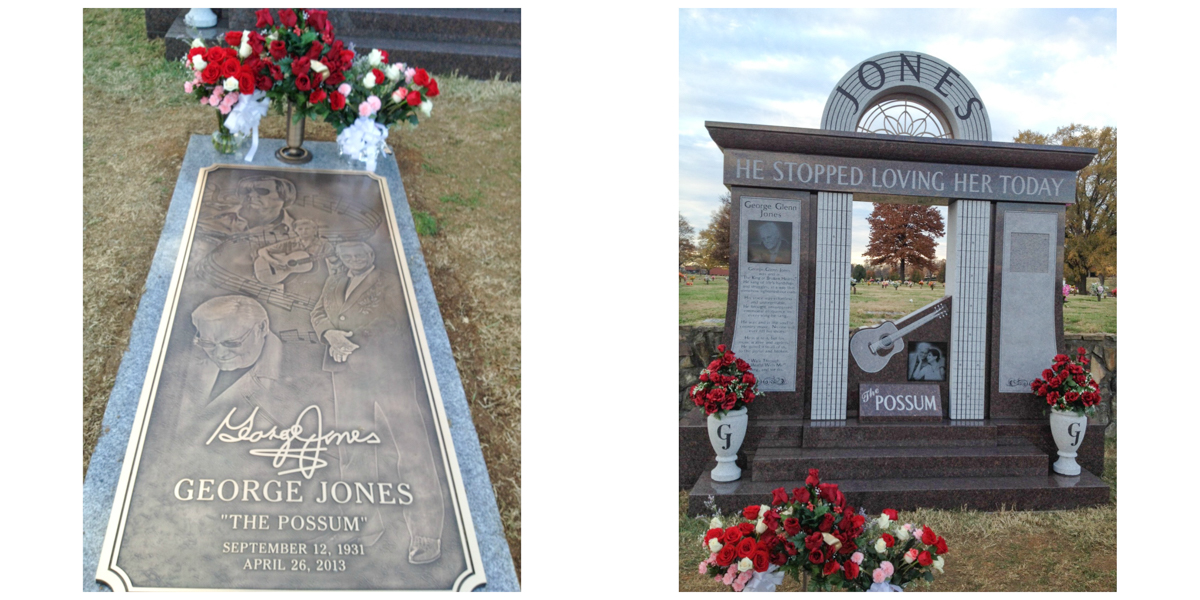Marking the resting place of the deceased is a long and storied practice – and the ways that these burial sites are marked range from the simple to the highly elaborate.
This is immediately evident when walking through a cemetery with graves marked by plain headstones bearing just the names and dates of the dead to monuments bearing long epitaphs, loving descriptions, and images or sculptures to grand mausoleums with columns and iron doors. And so, since it’s Halloween today, we thought it would be appropriate to take a quick tour of some of the unique and interesting grave markers that commemorate country musicians.
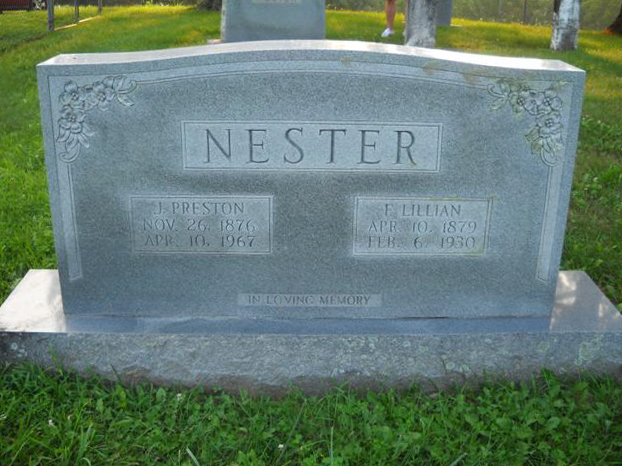
The gravestone of J. P. Nester, 1927 Bristol Sessions artist who recorded “Train on the Island” and “Black-Eyed Susie” with Norman Edmonds, is found in Cruise Cemetery, Carroll County, Virginia. It is beautiful in its simplicity, bearing just the names of Nester and his wife, their birth and death dates, and the common memorial sentiment: In Loving Memory.

The tombstone of “King of Bluegrass” Jimmy Martin, located in Spring Hill Cemetery in Nashville, Tennessee, is a contrast to Nester’s grave. The headstone is filled with what feels to be almost a full obituary to Martin, detailing his musical accomplishments and impact. A photograph portrait at the top of the stone is flanked by the song title “Will the Circle Be Unbroken” and the slightly revised song title “Shake Hands with Mother and Daddy Again,” presumably using the bluegrass standard as a basis for the heavenly sentiment. The woman’s name at the bottom of the tombstone – Mary Ann Garrison – is not his wife or a relative, but according to the engraving, she was a dear friend who cared well for his children when they were little. She was later the president of Jimmy Martin’s fan club.
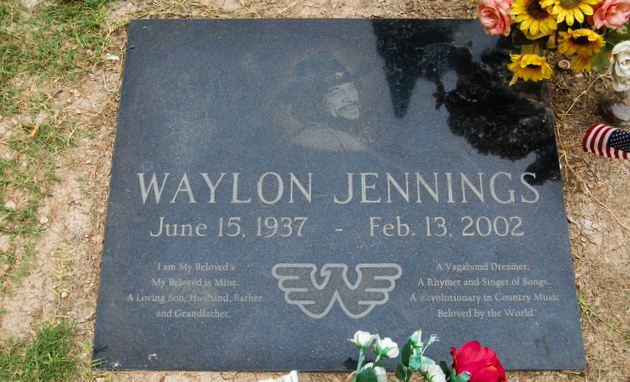
The final resting place of Waylon Jennings is in the City of Mesa Cemetery, Mesa, Arizona. For a year after his death in 2002, no stone marked his grave, and with the huge size of the cemetery, many country music fans who came to pay their respects that first year never found the site. A shiny black gravestone bearing his portrait and the “Flying W” emblem was put up in February 2003. The stone’s colorful description underlines Jennings’s character: “A vagabond dreamer / A rhymer and singer / A revolutionary in country music” while also highlighting him as son, husband, father, and grandfather. A quote from Song of Solomon 6:3 is also included: “I am my beloved’s, my beloved is mine.”
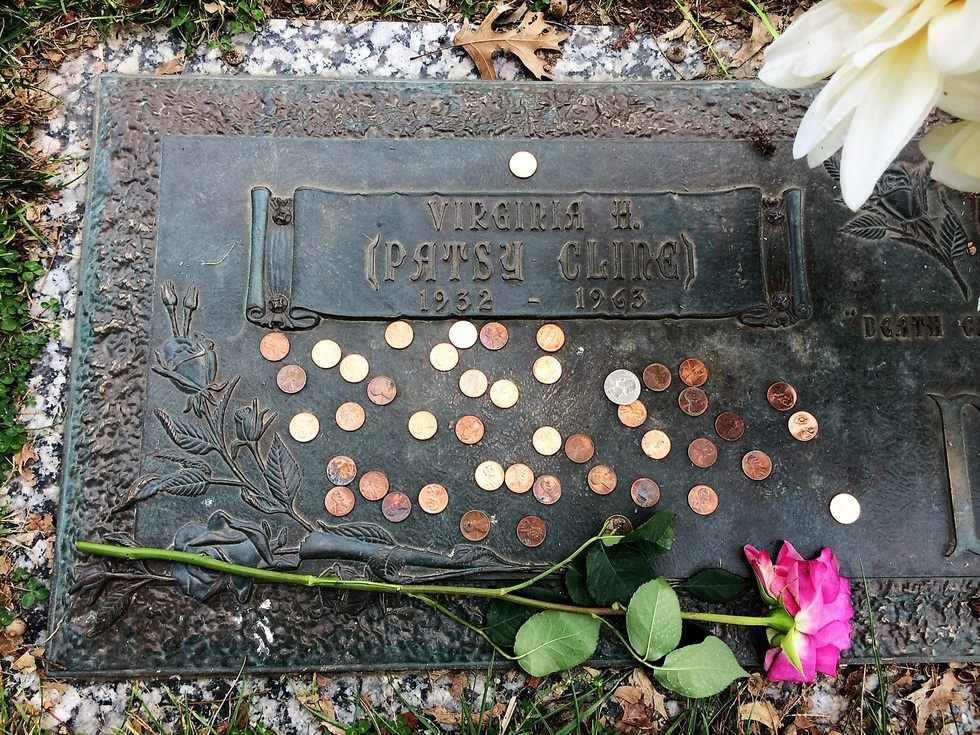
Patsy Cline’s grave can be found in the Shenandoah Memorial Park near Winchester, Virginia. While a bell tower has been erected there to mark her significance to her hometown, the grave site itself is simply marked by a humble plaque bearing her real (Virginia H. Dick) and stage (Patsy Cline) names. The plaque is often covered in pennies – put on her grave by visitors for luck.

Gene Autry is buried in Forest Lawn Memorial Park in the Hollywood Hills, reflecting his life on the big and small screens. The epitaph on his gravestone notes his many roles, from “America’s favorite cowboy” to philanthropist to baseball fan and owner to gentleman. However, it doesn’t record him by his well-known nickname as the “singing cowboy.” The five stars on the stone may refer to the five stars honoring him on the Hollywood Walk of Fame – for television, radio, film, recording, and live performance.
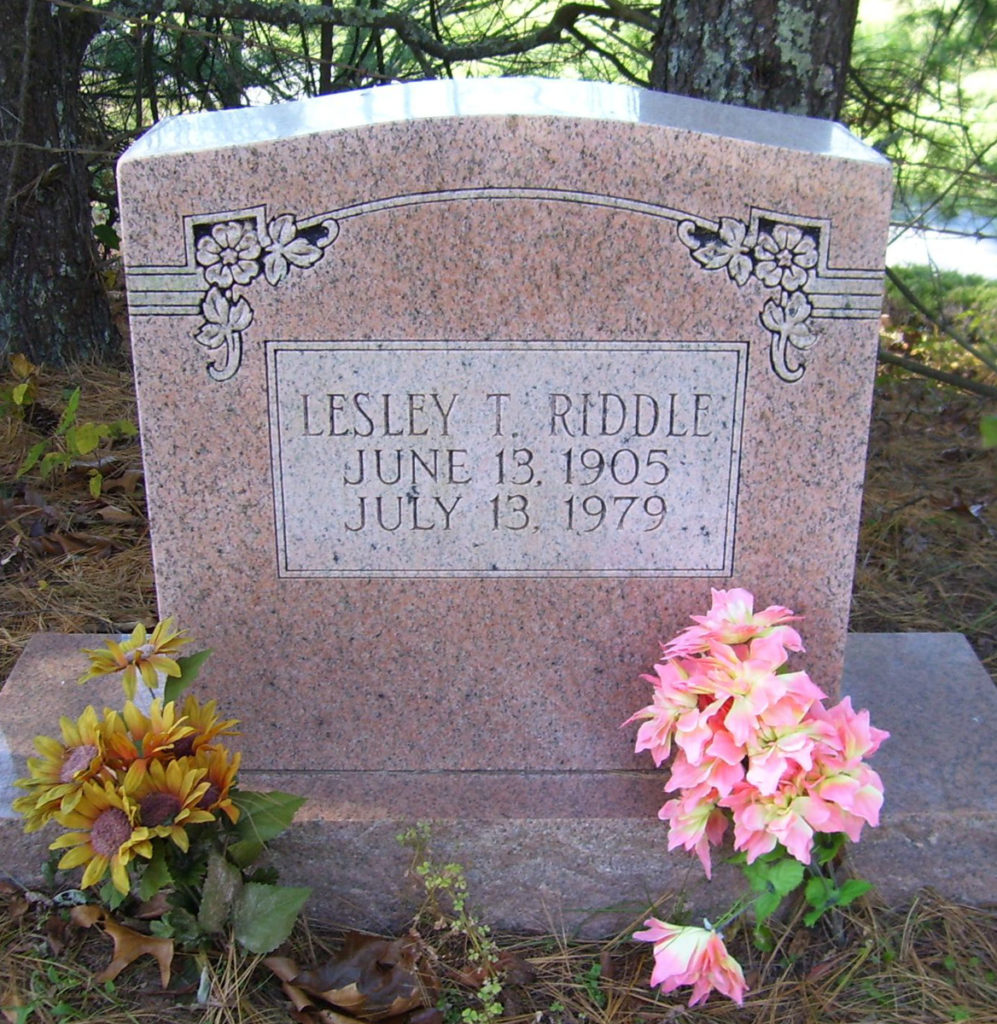
With Lesley Riddle – a musician who traveled with A. P. Carter searching out songs to preserve and adapt – we find another simple but rather beautiful headstone. The pink stone with corner floral embellishments bears his name and birth and death dates, but nothing more. Riddle’s grave can be found in the Horton Hill African American Cemetery in Burnsville, North Carolina.

George Jones is buried in grand style at Woodlawn Memorial Park and Mausoleum in Nashville. His resting place is marked by a large gravestone on the ground, along with an arched structure behind it. Along with the usual details – birth and death dates – these markers are adorned with etched images of Jones, his signature, his nickname as “the possum” (based on the shape of his nose!), biographical information detailing his life in music, and a carved guitar. The title of his most famous single, “He Stopped Loving Her Today,” is engraved along the top of the arch – a fairly appropriate reflection to mark a burial site.

Porter Wagoner is also buried in the Woodlawn Memorial Park and Mausoleum in Nashville. Bible verses and a cross decorate the top of the grave marker, while song lyrics are quoted below: “I’ve left this old world with a satisfied mind” and “It’s good to touch the green, green grass of home.” Marty Stuart referenced “Porter Wagoner’s Grave” (and Wagoner’s trademark flashy way of dressing!) on his album Ghost Train: The Studio B Sessions.
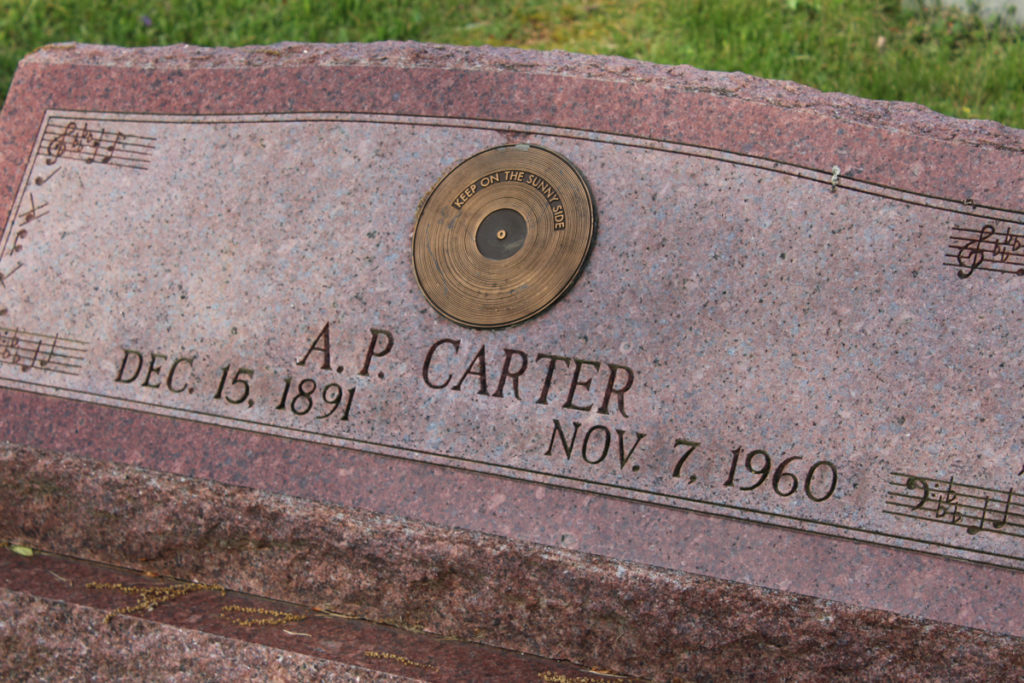
The headstone marking A. P. Carter’s grave is found in the small cemetery of the Mt. Vernon United Methodist Church in Hiltons, Virginia. Like the stones for Nester and Riddle, Carter’s marker is simple in the details included: name and birth and death dates. It highlights his important role in music history, however, with the musical notation edging and the central record – “Keep on the Sunny Side” – above his name.

Despite the fact that A. P. and Sara Carter divorced and she later remarried his cousin Coy Bayes, Sara is buried near A. P. in the Mt. Vernon United Methodist Church cemetery in Hiltons, Virginia. Her tombstone is in the same style as A. P.’s, with the additional engraving “Anchored in Love,” another Carter Family tune.

A. P. and Sara Carter’s children, Joe and Janette, are also buried in the Mt. Vernon United Methodist Church cemetery in Hiltons, Virginia. Janette Carter’s tombstone doesn’t reference her significant musical legacy – as a musician and as the founder of the Carter Family Fold – but rather simply includes her name, birth and death dates, and an etched angel and epitaph “Deliverance has come.” Interestingly, her name is spelled Jeanette on the grave marker, rather than the more commonly seen Janette. Her brother Joe’s grave marker, however, is a wonderfully inventive monument to music – shaped as a guitar and with a floral urn decorated with music notes, it also bears images of Joe and rural life.
Finally, there are three important musicians we wished to include but usable images were elusive. However, their monuments are still worth mentioning, and you can find images of their grave markers here. Maybelle Carter is buried in the Hendersonville Memory Gardens in Hendersonville, Tennessee. Carter’s grave marker, adorned with an angel and a rising sun, memorializes her as the “first lady of country music,” a reference stemming from the Carter Family’s recognition as the “first family of country music.” With the words “God has picked his wildwood flower,” it also highlights one of her most well-known and beloved songs. Johnny Cash and June Carter Cash (Maybelle’s daughter) are also buried in the Hendersonville Memory Gardens. Their plots lie beside each other, and both of their grave markers bear a Bible verse – hers is Psalm 103:1 and his is Psalm 19:14 – and their signatures (a practice that seems to be a common theme on country music gravestones). A bench near the grave site is etched with their last names, along with two of their well-known song titles: “I Walk the Line” and “Wildwood Flower.”
René Rodgers is the Curator of Exhibits & Publications at the Birthplace of Country Music Museum. Special thanks to interns Hannah Arnett and Summer Apostol for their hard work and research for this post.


